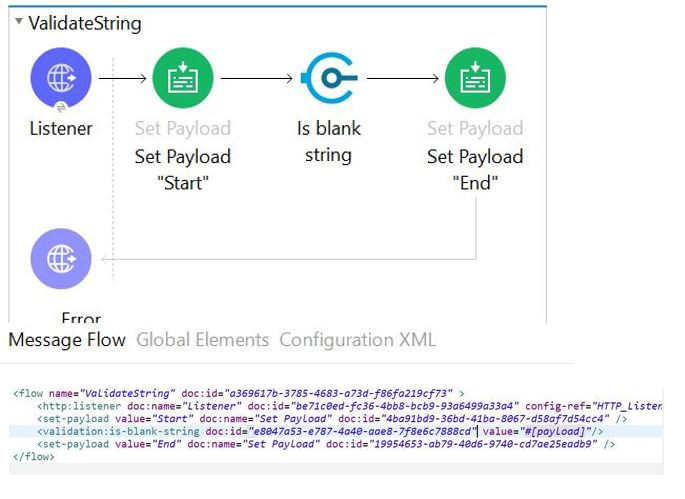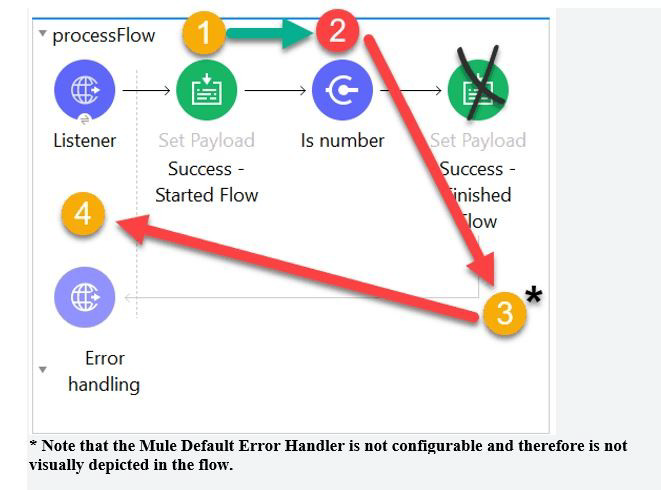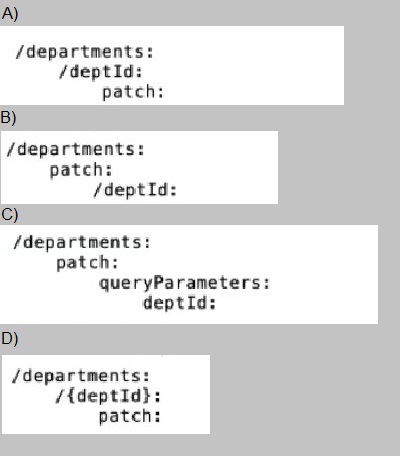Where is metadata stored in a Mule project
A. Config.yaml file
B. POM.xml file
C. application-types.xml
D. Global Element
Explanation:
Metadata is stored in application-types.xml flle located under src/main/resources.
Mule 4 applications contain an application-types.xml file, which is where metadata around
your data types is stored. For example, if you create a new CSV type, that metadata will be
added to this file. This new file is easy to share, commit, and merge when conflicts arise,
which enables you to do more metadata-driven development.
Refer to the exhibits.
A web client submits the request to the HTTP Listener. What response message would be
returned to web client?
A. End
B. String is not blank
C. No response would be sent back to client and request will get errored out in Mule
D. Start
Explanation:
Correct answer is String is not blank.
-------------------------------------------------------------------------------------------------------------------------

Refer to the exhibits.

A. Option A
B. Option B
C. Option C
D. Option D
Explanation: Correct answer is as below. After all processing routes have finished execution, the Scatter- Gather component creates a new Mule event that combines all resulting Mule events from each route, and then passes the new Mule event to the next component in the flow.
In the Database On Table Row operation, what does the Watermark column enable the On Table Row operation to do?
A. To avoid duplicate processing of records in a database.
B. To delete the most recent records retrieved from a database to enable database caching
C. To enable duplicate processing of records in a database
D. To save the most recent records retrieved from a database to enable database caching
Explanation:
The correct answer is To avoid duplicate processing of records in a database.
If a watermark column is provided, the values taken from that column are used to filter the
contents of the next poll, so that only rows with a greater watermark value are returned. If
an ID column is provided, this component automatically verifies that the same row is not
picked twice by concurrent polls.
What statement is a part of MuleSoft's description of an application network?
A. Creates and manages high availability and fault tolerant services and infrastructure
B. Creates reusable APIs and assets designed to be consumed by other business units
C. Creates and manages a collection of JMS messaging services and infrastructure
D. Leverages Central IT to deliver complete point-to-point solutions with master data management
What does C4E stands for in MuleSoft recommended IT operating model?
A. Centre for Empowerment
B. Centre for Engagement
C. Centre for Enablement
D. Centre for Excellence
Centre for Enablement (C4E) is an IT operating model that enables an enterprise to build reusable assets, accumulate API’s, leverage best practices and knowledge to enable self service and efficient delivery in the organization and implement new solutions faster.
Refer to the exhibits.
The orders.csv file is read, then processed to look up the orders in a database. The Mule
application is debugged in Any point Studioand stops at the breakpoint.
What is the payload shown in the debugger at this breakpoint?
A.
"none"
B.
The entire CSV file
C.
The database response
D.
100
100
A company has an API to manage departments, with each department identified by a
unique deptld. The API was built with RAML according to MuleSoft best practices.
What is valid RAML to specify a method to update the details for a specific department?
A.
Option A
B.
Option B
C.
Option C
D.
Option D
Option D
| Page 1 out of 29 Pages |